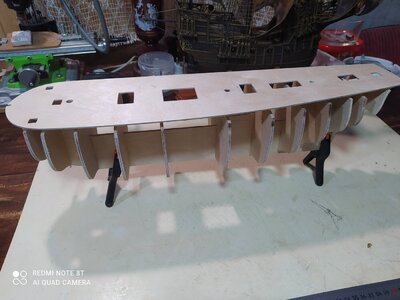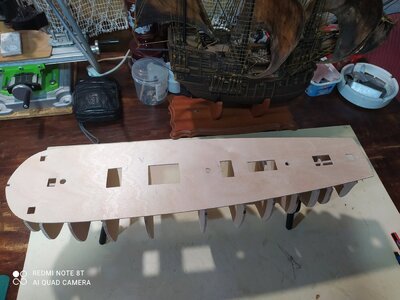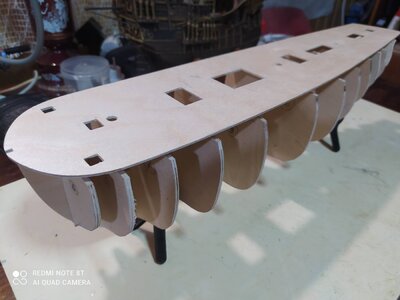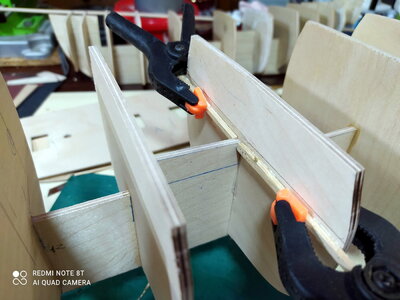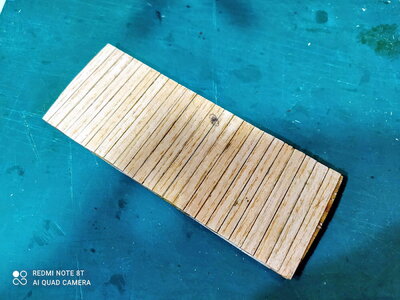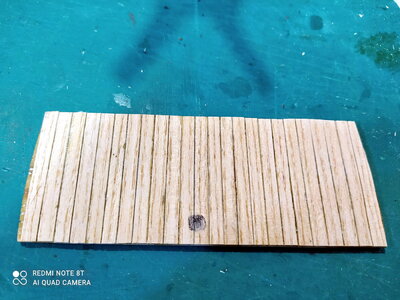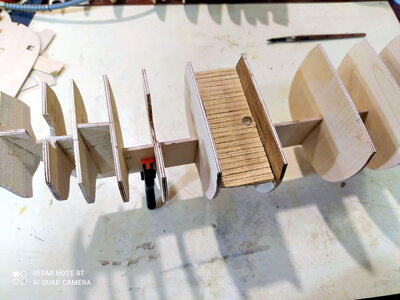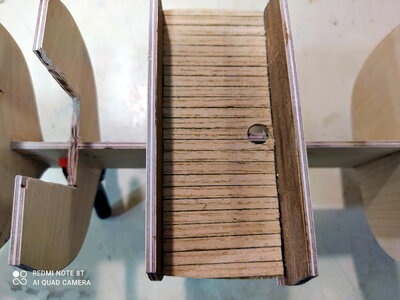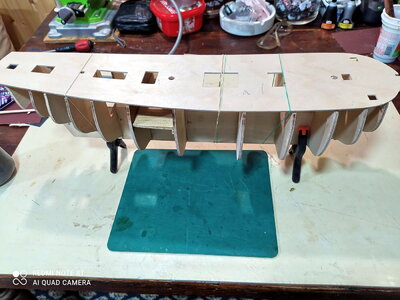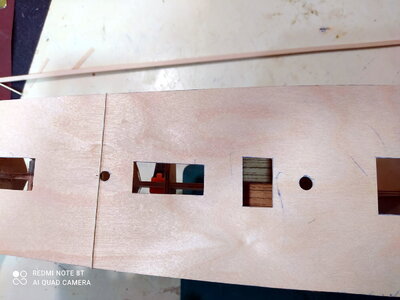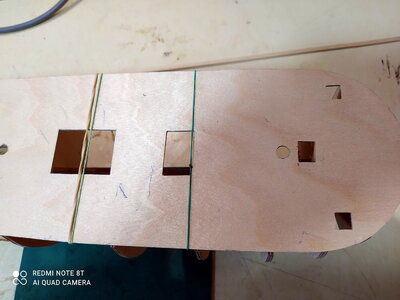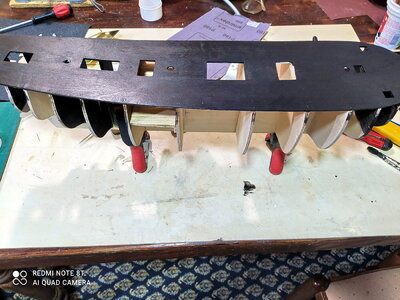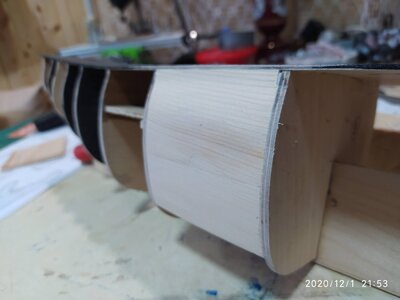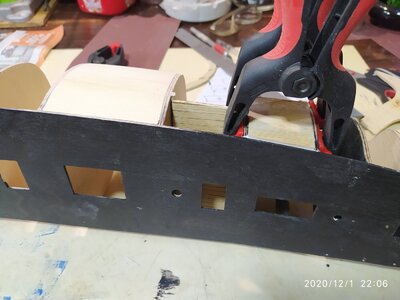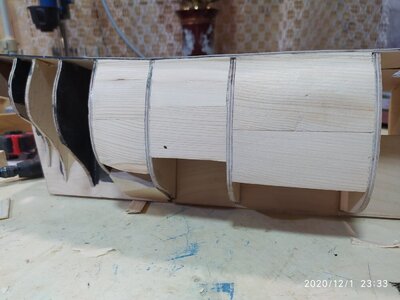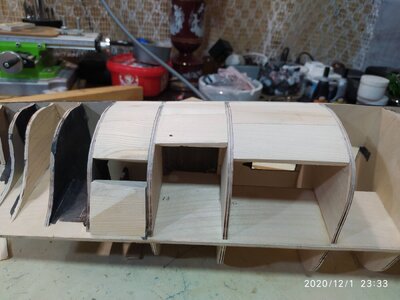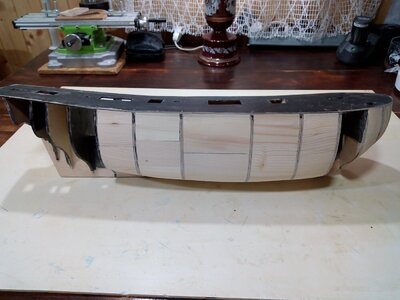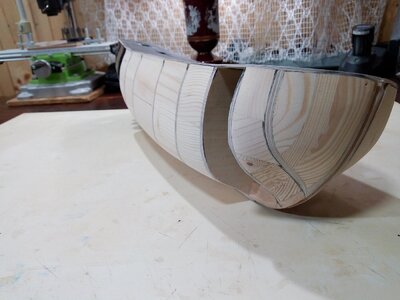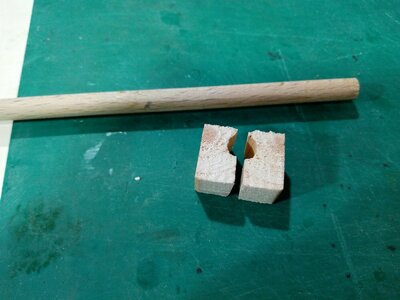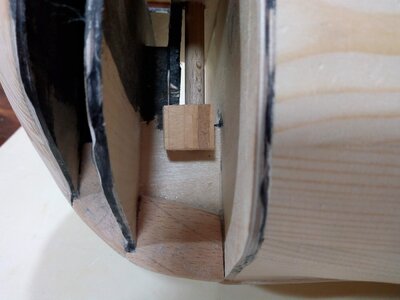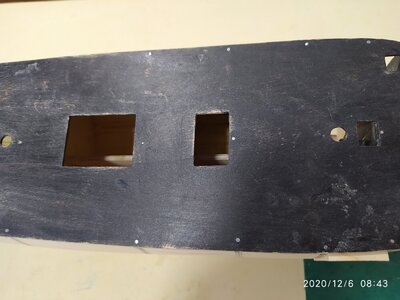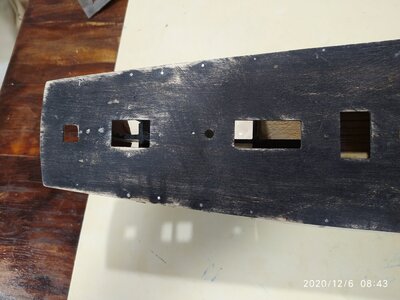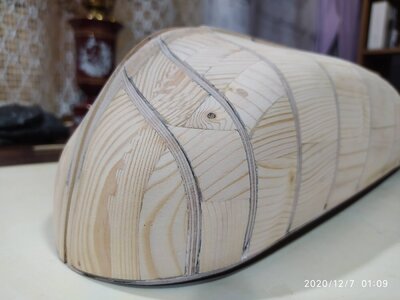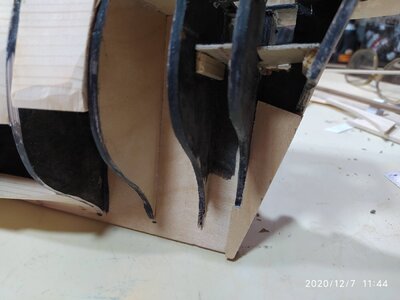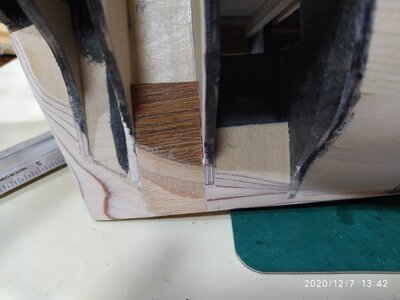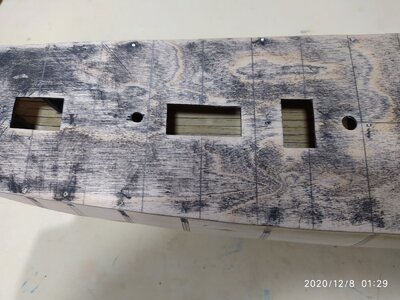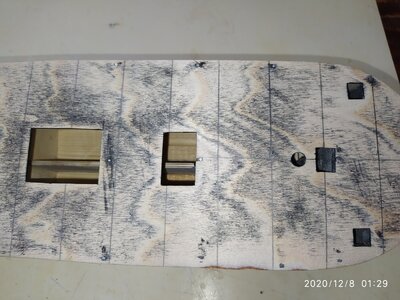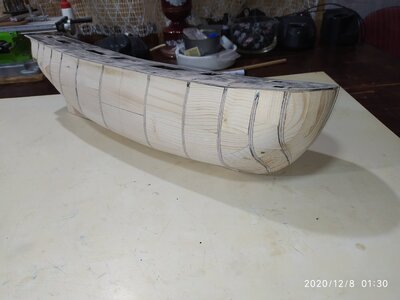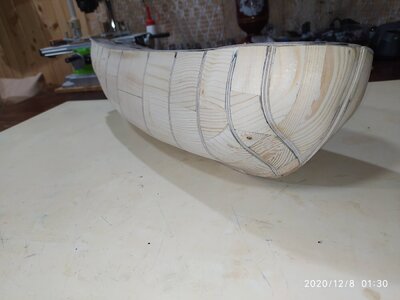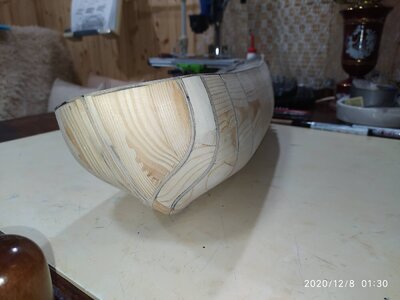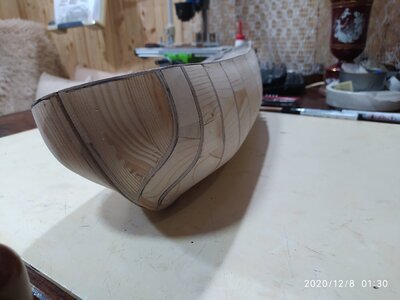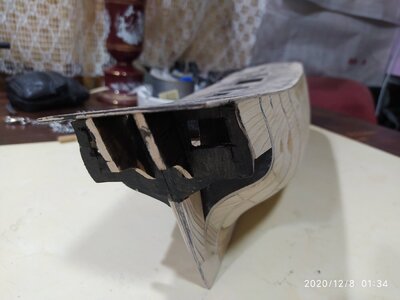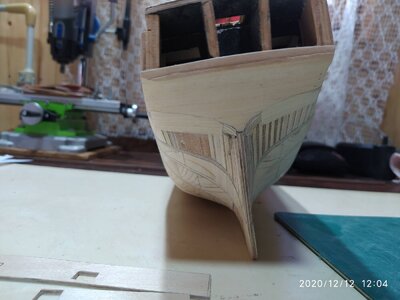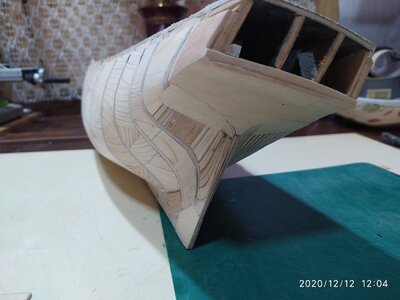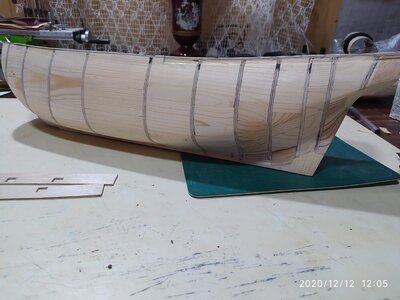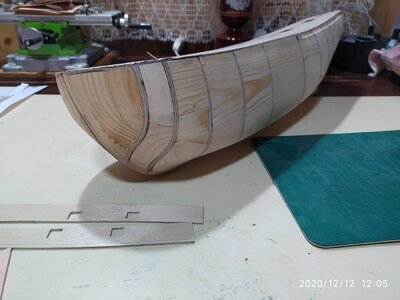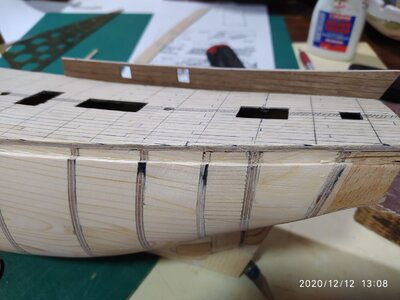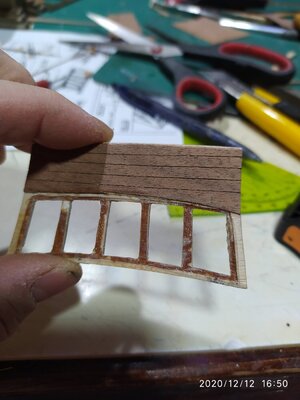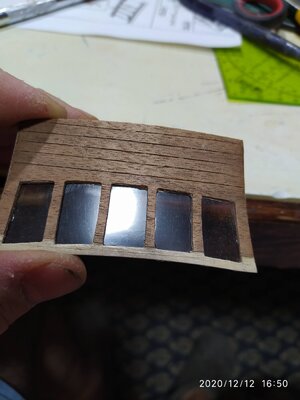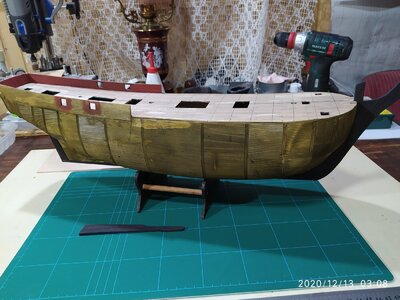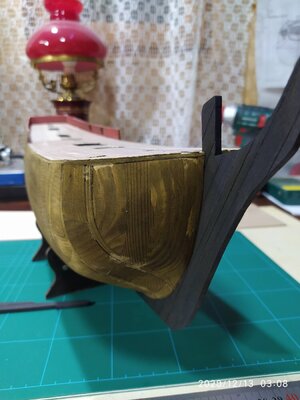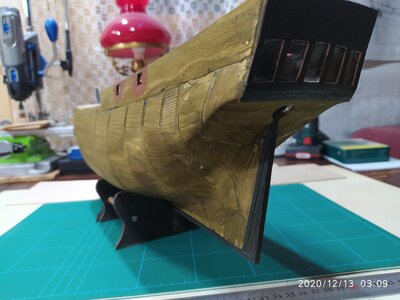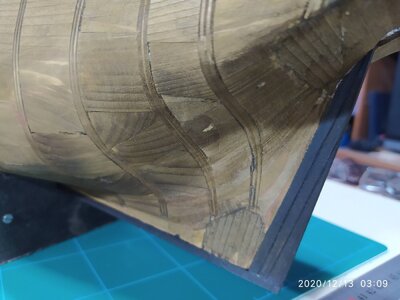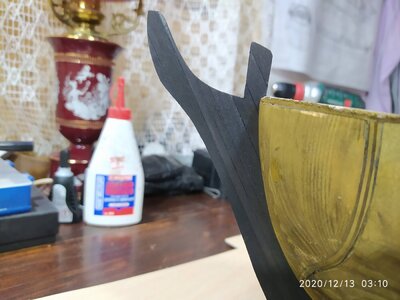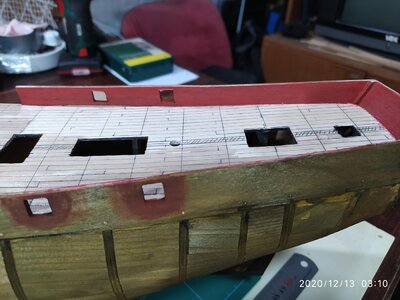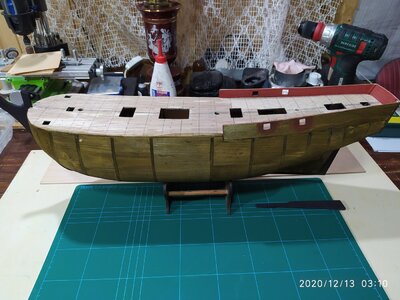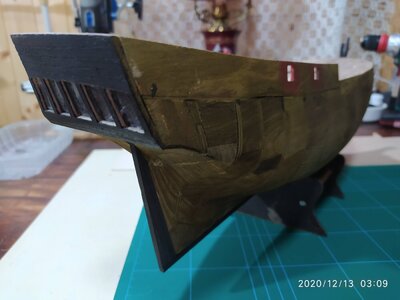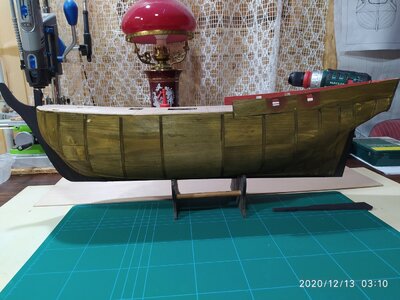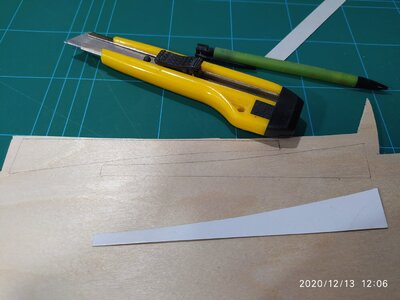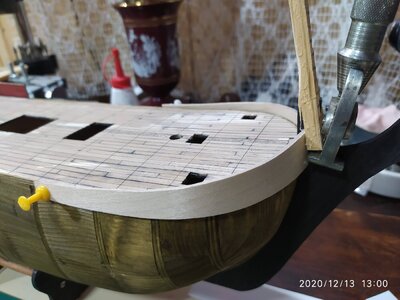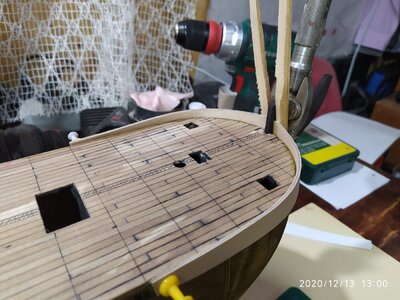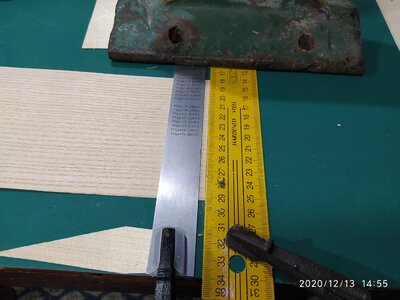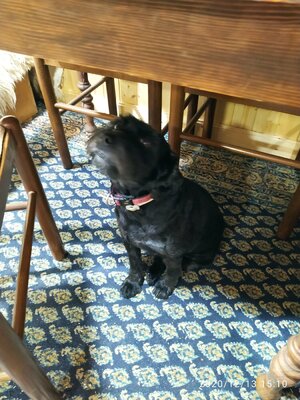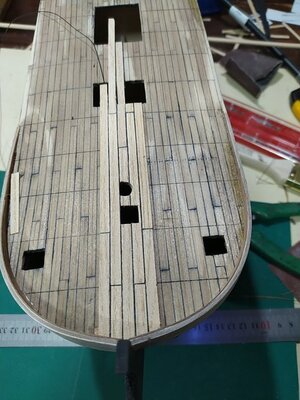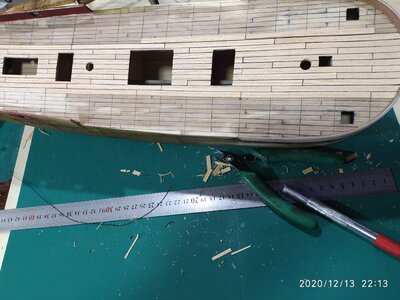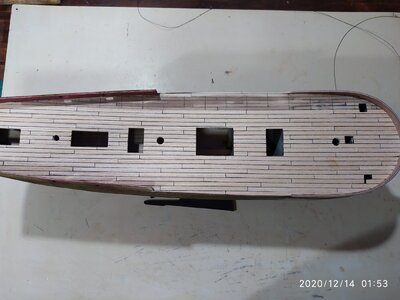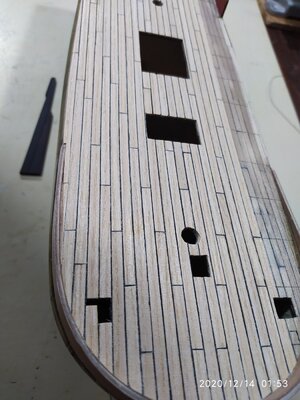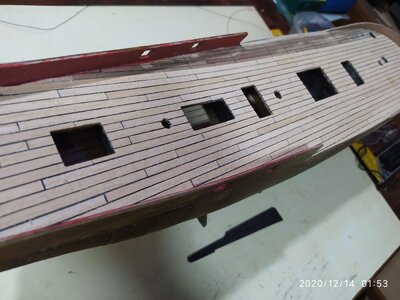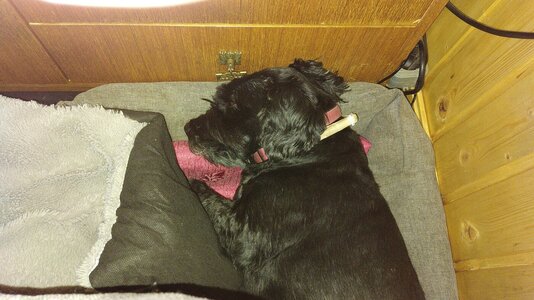As my Argosy carrack is in the final stage, requiring just s dozen or so hours more for finishing touch, I suddenly got an inspiration for the next build, the ship I wanted to make for a long time ago - HMS Bounty.
This will be another scratch build, chosen scale is 1:60 which will be quite a relaxation after complicated work small parts of1:100 scale Ragusian carrack and would let me to make all details with more accuracy. Also I expect to finish this one in a shorter time, I hope in less than 12 months before jumping on another one.
I was reluctant which version to build, open hull to show interior, or fully completed mode, yet as a modeler of the old school, although open hull models are interesting showing interior of the ship, fully completed model is more of an "old school" and artistic so I decided to make it that way, with all the rigging and sails.
Construction is "plank on the bulkheads" type and I already finished all bulkheads, keel, and keel support parts as well as the main deck.
I took just a few pictures to post now, the more will come in the next days.
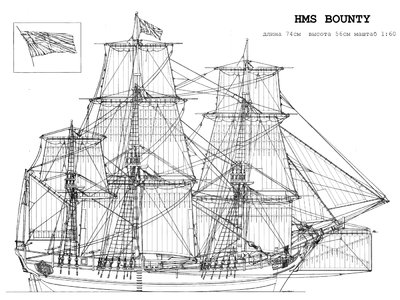
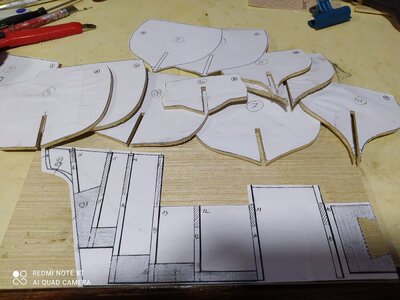
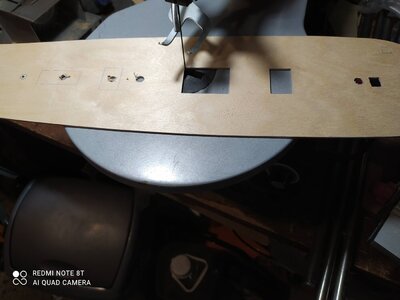
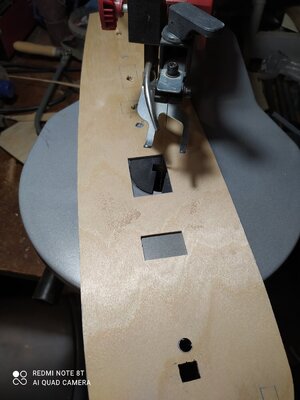
This will be another scratch build, chosen scale is 1:60 which will be quite a relaxation after complicated work small parts of1:100 scale Ragusian carrack and would let me to make all details with more accuracy. Also I expect to finish this one in a shorter time, I hope in less than 12 months before jumping on another one.
I was reluctant which version to build, open hull to show interior, or fully completed mode, yet as a modeler of the old school, although open hull models are interesting showing interior of the ship, fully completed model is more of an "old school" and artistic so I decided to make it that way, with all the rigging and sails.
Construction is "plank on the bulkheads" type and I already finished all bulkheads, keel, and keel support parts as well as the main deck.
I took just a few pictures to post now, the more will come in the next days.









